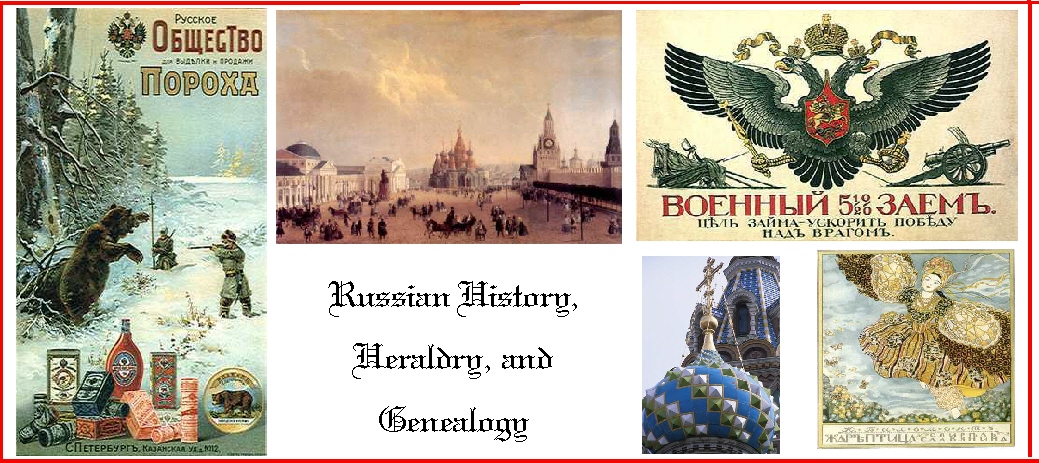

Russian Orders
According to an article entitled "The Tsar's Highest Favor: Russian Orders and Medals" by Valentina M. Nikitina from the bookMoscow: Treasures and Traditions published by the Smithsonian Institute:
"The earliest decorations to be awarded for civil service and feats of arms appeared in Russia at the turn of the seventeenth century, although the origin of the system of awards goes back to the beginning of the Old Russian state. The custom of awarding valiant warriors with special decorations existed in Kievan Rus in the eleventh and twelfth centuries. The earliest such decoration was the grivna--a torque made of precious medals and worn around the neck."
It was recorded that Prince Vladimir gave the grivna to Aleksandr Popovich, his brave commander who destroyed the Polovetsian army at the city walls.
Many of these medals are presently housed in the Kremlin Armory.
From 1489 onwards, gold and silver coins were also used for awards for soldiers of valor. These coins were then used as decorations on the hat or sleeve. It was not until the sixteenth century that the medal, as we know it today, was used. The awarding of medals became popular with Peter the Great, since he liked to give them to his loyal subjects and soldiers.
Towards the end of the seventeenth and early eighteenth century, the Order of St. Andrew was established.
Please follow these links to learn more about each individual order that was given by the Russian crown.
Under Catherine II the system of Russian awards and priveleges were elaborated upon. Those decorated with the Orders of St. Vadimir and St. George were entitled to a pension, and any commoner who received either of these two awards was ennobled.
In 1831, following the division of Poland, in 1815, the Polish Order of the White Eagle and the Order of St. Stanislas were incorporated into the list of Russian orders. They were given to people of Polish extraction by Czar Alexander I. At this time, they were given the "Imperial" designation. The Decoration Regulations were enacted under Paul I, in 1797, and was in force until 1917. In 1855, Admiral Paval Nakhimov was awarded the Order of the White Eagle.
After 1845, the state emblem of the Russian Empire, the double-headed eagle, was substituted for the representations and monograms of saints on badges and stars given to non-Christians.
The earliest badges were produced at the Kremlin workshops, and in the eighteenth and nineteenth centuries they were produced in St. Petersburg. In the nineteenth century they were many metal workshops and large firms specializing in badges, orders, and other decorations that employed skilled goldsmiths, silversmiths, and enamelers.
Because of the quality of these awards they are valued by many collectors, for their beuaty and their historical significance.
SOURCES:
Durov, V.A. Russian and Soviet Military Awards Order of Lenin State History Museum, 1990.
Massie, Robert K. Peter the Great New York: Alfred A. Knopf, 1981.
Piotrowski, Mikail B. (editor). Treasures of Catherine the Great. New York: Harry N. Abrams, 2000.
"The Tsars Highest Favor: Russian Orders and Medals" by Valentina M. Nikitina. Moscow: Treasures and Traditions. Smithsonian Institution Traveling Exhibition Services, Seattle: Washington Press, 1990.
